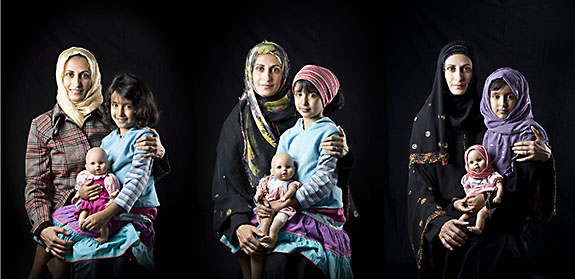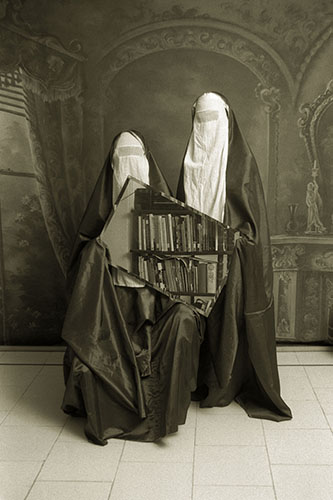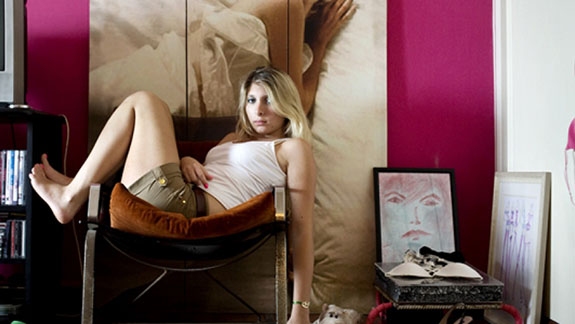 |
This exhibition, organized by the Museum of Fine Arts, Boston, brings us the work of 12 woman photographers who are either from Iran or the Arab world, the distinction being that Farsi is the primary language spoken in Iran, whereas Arabic is the language that is spoken in the five other countries from which the other artists hail. There is a lot of diversity to be found in this grouping of 79 photographs, even as most of it is difficult to encapsulate. But the various notions of “story” around which this exhibition coheres all beg a single question: who is the intended audience for these visual narrations?
 |
At first blush, it might seem that the answer would exclude a white male American such as myself, but it may also be possible that these stories are actually intended to address people like me, perhaps redefined as “subconscious practitioners of Orientalist prejudice, “ or “would-be colonists.” More broadly speaking, the target might also be the imperializing gaze of all photographic image-making, in that a great many works included here feature unsmiling faces that look directly at, and, in some cases, confrontationally into the camera, as if to face an unwelcome accuser. These faces usually conceal as much as they reveal, but they make clear that they have no interest in ingratiating themselves as “subjects.”
 |
.jpg) |
Lebanese photographer Rania Matar is one of the two most interesting photographers in the exhibition. Her images feature young women who have given themselves over to western modes of scanty dress, almost all of whom look away from the camera, out in space as if they were daydreaming. What makes them compelling is that the environments in which the subjects are placed tell complex stories about a “freedom” that is little more than an inundation of youth culture that is now a global phenomenon. Yet, their wistful looks betray an easy identification with that culture, which is to say that it is almost as if these young women are looking back on a previous condition of relative constraint with some amount of nostalgia. My other favorite photographer in the exhibition, Shadi Ghadirian, works in what could be called still-life photography. Her images are feasts for the eye, but they always have a disquieting moment when you realize that something is out of place. For example, in one image of a bowl of fruit, we see a hand grenade alongside apples, oranges and grapes. In another we see a woman’s handbag full of cosmetics and whatnots interspersed with high-caliber machine gun ammunition.